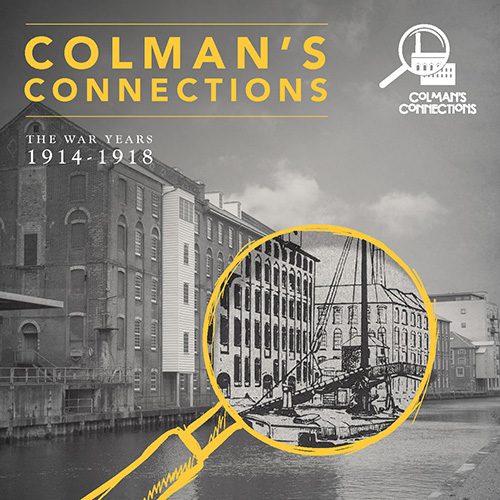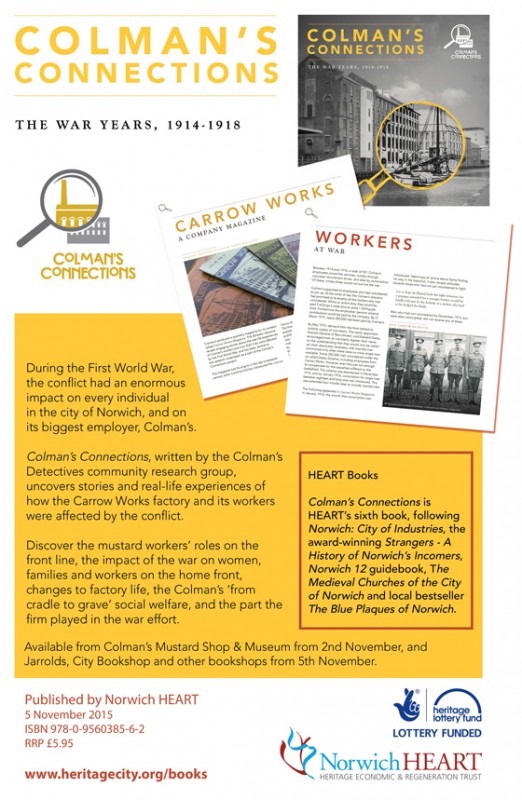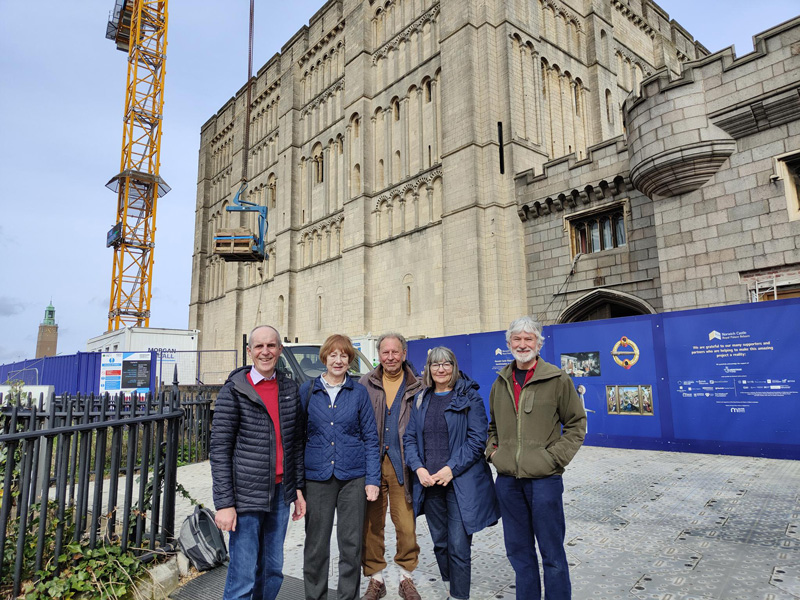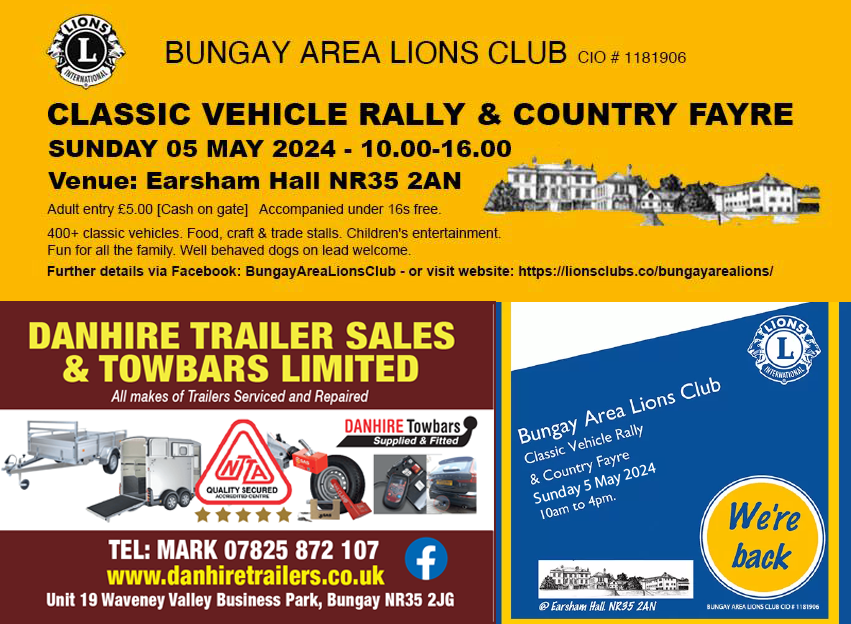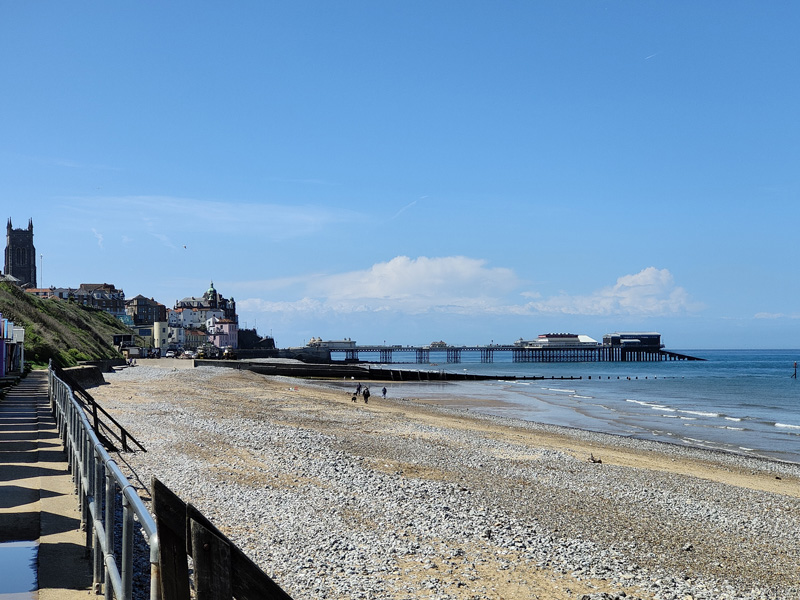>November Events / >October Events / Events in Norfolk and Suffolk / exhibitions / Then & Now / Tourist Attractions Norfolk and Suffolk November 2, 2015
Colmans Connections
A new book and exhibition, researched by volunteers and students, unearths the impact of the First World War on one of Norwich’s biggest industries at the time, thanks to National Lottery players.
Colman’s Connections: The War Years 1914-1918 has been curated by the Colman’s Detectives, a community research group, along with the Heritage Heroes from Lakenham School, and uncovers stories and real-life experiences of how the Colman’s Carrow Works factory and its worker’s lives were affected by the First World War. The intergenerational community research project has been supported by Norwich Heritage Economic and Regeneration Trust (HEART) and received funding of £37,700 from the Heritage Lottery Fund (HLF). The research undertaken by the Colman’s Detectives has led to the creation of a ‘pop-up’ exhibition, interactive digital timeline and book about the stories they have discovered.
The book and exhibition look at the mustard workers’ roles on the front line, the impact of the war on women, families and workers on the home front, and the part Colman’s played in the war effort. During the exhibition, visitors will be able to see authentic medals and original items owned by soldiers and families on display, view a Roll of Honour commemorating mustard workers lost during the conflict, and discover ‘Household Hints’ collated from wartime copies of Carrow Works Magazine, as well as follow the history of the firm during the conflict on a digital interactive timeline.
Colman’s has an extraordinary story, and has played a significant role in the history of Norwich and its citizens. The company still employs many people and holds a special place in the culture and identity of the city. During the First World War, many soldiers wrote home describing their experiences. One such correspondent was Harold Ernest Philpott, who was a clerk at Carrow Works, before serving with the Royal Army Medical Corps during the war. His letters, published in the Carrow Works Magazine, describe his journey to Gallipoli, where during a stopover at Alexandria, he saw a Colman’s advert on a tram.
The project also researched the ‘from cradle to grave’ philanthropic attitudes of Colman’s during the war, from its schools and medical care, through to societies, housing, pensions and even coffins for their workers – the latter recorded in the exceptional ‘Coffin Book’ which detailed the date, name, address and department of the deceased, as well as the type of wood used and fixtures and fittings, which all depended on the worker’s rank within the company.
Explaining the importance of the HLF support, Robyn Llewellyn, Head of Heritage Lottery Fund East of England, said: “The impact of the First World War was far reaching, and touched every corner of the UK and beyond. The Heritage Lottery Fund has already invested more than £70 million in projects – large and small – that are marking this global centenary; with our new small grants programme, we are enabling even more communities like those involved in the Colman’s Connections project to explore the continuing legacy of this conflict and help local young people in particular to broaden their understanding of how it has shaped our modern world”.
Sarah Power, Colman’s Connections Education Project Manager, said: “This has been an exciting and really engaging project to work on, and we are hugely impressed with the amount and quality of research that the Colman’s Detectives have uncovered – they have done an amazing job of pulling together archive sources to produce a fascinating book and exhibition.”
She continued: “The Heritage Heroes at Lakenham Primary school explored the overarching history of the Colman’s factory, and worked towards Arts Award Explore – their work will be showcased during the exhibition. Hellesdon High School also worked with artist Matt Reeve to populate the digital timeline.”
Patricia Brocklebank, Colman’s Detective, said: “It has been great to work with others who share a passion for local history and research and at the same time learn new skills. I have been amazed at the huge volume of information and material in local archives that is available to the public, and very appreciative of the help that staff at the Millennium Library and the Norfolk Record Office have given us.”
The exhibition takes place at The Forum, Norwich, from Monday 2nd to Friday 13th November. The Colman’s Connections book will be on sale at Colman’s Mustard Shop & Museum from 2nd November, and in all good retailers from 5th November. There will be a series of talks, workshops and family activities about the First World War to accompany the exhibition.
The community project was run by Norwich HEART with funding from the Heritage Lottery Fund (HLF), and was also supported by Norfolk Record Office, Norfolk Library and Information Service, The Forum and Unilever Archives.
For more information about the book, exhibition and accompanying events, visit www.heritagecity.org/colmansconnections, or pick up the Colman’s Connections leaflet from Norwich TIC, The Forum or Colman’s Mustard Shop & Museum.
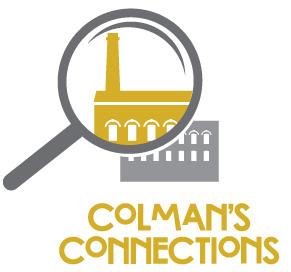
Colman’s Connections: The war years, 1914-1918
An exhibition curated by the Colman’s Detectives, a community research group, uncovering stories and real-life experiences of how the Carrow Works factory and its worker’s lives were affected by the First World War.
Discover the mustard workers’ roles on the front line, the impact of the war on women, families and workers on the home front, and the part Colman’s played in the war effort, all unearthed by the Colman’s Detectives, and Heritage Heroes from Lakenham School, during the Colman’s Connections project.
See authentic medals and original items owned by soldiers and families on display, view a Roll of Honour commemorating mustard workers lost during the conflict, and discover ‘Household Hints’ collated from wartime copies of Carrow Works Magazine.
The Colman’s Detectives have also produced the Colman’s Connections booklet, on sale at Colman’s Mustard Shop & Museum from 2nd November, and in all good retailers from 5th November. There will be a series of talks, workshops and family activities to accompany the exhibition.
The community project was run by Norwich HEART with funding from the Heritage Lottery Fund (HLF), and was also supported by Norfolk Record Office, Norfolk Library and Information Service, The Forum and Unilever Archives.
www.heritagecity.org/colmansconnections
Listings:
Exhibition:
Monday 2nd – Friday 13th November (Monday – Saturday, 9am-5pm)
The Forum, Millennium Plain, Norwich, NR2 1TF
Various locations around The Forum: The Atrium, Norfolk & Norwich Millennium Library, the Children’s Library and Norfolk Heritage Centre. Please note that all of the locations are open Monday – Saturday, 9am-5pm, and some have extended opening hours beyond these times.
Talks & Workshops:
All talks and workshops take place in the Vernon Castle Room, Norfolk Heritage Centre, 2nd floor, Norfolk and Norwich Millennium Library, The Forum.
–
Monday 2 November, 2–3pm
Norwich in the First World War
Talk by Neil Story
FREE but booking essential via www.norwich-heart.eventbrite.co.uk
Norwich in the First World War is an exploration of the role and significance of the city, and its people during the years 1914-1918, with a special consideration to the profound impact of war and warfare on people on the home front.
Neil Storey is one of the foremost authorities on the military history of the county during the First and Second World Wars and is the author of Norfolk in the Great War and Norfolk Goes to War.
–
Thursday 5 November, 1.30 – 3.30pm
Discover your First World War ancestors
Workshop by Elizabeth Budd
£5.00 – booking essential via www.norwich-heart.eventbrite.co.uk
Discover how to research your First World War ancestors in this workshop with archive specialist Elizabeth Budd, following a real family through records ranging from censuses to medals to service records.
Get hands-on with useful websites and examples of archives to build the story of these men and find out where to start your own investigations, no matter what your ancestor’s service history. The session will last two hours and all participants will go away with a printed guide as well as, we hope, some new skills.
–
Thursday 5 November, 6 – 7pm
Women before, during and after WWI
Talk by Joy Evitt (Costume & Textile Association)
FREE but booking essential via www.norwich-heart.eventbrite.co.uk
In the First World War women took on a wide variety of roles but the outcome of their wartime activities were very similar. They became more independent and developed a new attitude to the way they lived their lives and the clothes they wore. The days of excessive ornamentation, tight corsets and large amounts of fabric were over. The new woman could be seen in public on her own; she participated in sport, drove cars, travelled and worked in a wide variety of jobs.
This talk looks at how the clothes chosen were simpler and were easier to buy or make. The office girl could look as good as the debutante which meant that fashion had finally become more democratic!
–
Monday 9 November, 1.30 – 4.30pm and Thursday 12th November, 12.30 – 3.30pm
First World War Poetry
Workshop by poet Andy Bennett
£20 – booking essential via www.norwich-heart.eventbrite.co.uk
From the early idealism of Rupert Brooke, through the trench-bound horror of Wilfred Owen, to the millions of wives, daughters, and mothers waiting anxiously at home for news, the upheaval of the First World War saw an outpouring of poetry rarely seen in the history of English letters.
Discover this fascinating and moving period of poetic history, and learn poetic skills and techniques to write your very own war sonnet – skills that are as relevant and valuable today as they were a century ago. Please note that the workshop consists of two afternoon sessions and you should be able to attend both.
–
Thursday 12 November, 6 – 7pm
Conscientious Objection in Norfolk
Talk by Orla Kennelly (Norfolk Record Office)
FREE but booking essential via www.norwich-heart.eventbrite.co.uk
A glimpse of conscientious objection in Norfolk during the First World War. We will look at the records of HM Prison Norwich and discuss public attitude to imprisonment for Conscientious Objectors. Discover the letters of Walter Mancroft, Norwich man, who served time in Norwich, Wormwood Scrubs, Dartmoor and Wakefield Prisons during the war for his pacifism.
–
Family Activities
Saturday 7 November, 10am – 4pm
Make a Remembrance Poppy
The Atrium
FREE drop-in event
During the First World War, war raged through Europe’s heart. Once the conflict was over the poppy was one of the only plants to grow on the otherwise desolate battlefields. To remember all those who were lost, create a remembrance poppy to display somewhere special this year on Remembrance Day. Family activity for all aged 5+.
–
Sunday 8 November, 12pm and 2.30pm
Fire from the Skies, Guns from the Earth
Family storytelling by Liam Carroll
Express library / Children’s Library
FREE drop-in event
An entertaining, informative and provocative story. We follow the fictional adventures of flying ace Biggles, a comic book hero who frequently volunteers for death defying missions, and the real-life anti-war poet Wilfred Owen, who has to slog his way through the mud on the frontline. Ideal for ages 7+.
About Norwich HEART
Norwich’s Heritage Economic and Regeneration Trust (HEART) is an independent charitable organisation which champions remarkable heritage in Norwich and beyond. Working in collaboration with local and European partners, it has helped to contribute to the local and regional economy through heritage regeneration, tourism and major cultural events.
–
About Colman’s Mustard Shop & Museum
Colman’s Mustard Shop & Museum was opened in 1973 to commemorate the 150th anniversary of Colman’s, with premises on Bridewell Alley. It moved to the historic art nouveau Royal Arcade in 1999, where it has been based ever since in a careful replica of Victorian trade premises.
The shop stocks an extensive range of powder and prepared mustards, including a number of specialities made exclusively for the shop. In addition, there are a wide selection of mustard pots and spoons, together with tea towels – not to mention a broad range of Colman’s memorabilia. It also contains many items on loan from the archives, covering all aspects of the history and production of Colman’s mustard.
–
About the Heritage Lottery Fund
Using money raised through the National Lottery, the Heritage Lottery Fund (HLF) aims to make a lasting difference for heritage, people and communities across the UK and help build a resilient heritage economy. From museums, parks and historic places to archaeology, natural environment and cultural traditions, we invest in every part of our diverse heritage. HLF has supported over 36,000 projects with more than £5.9bn across the UK.
–
History of Colman’s
Colman’s has been an influential business in Norwich for 200 years. The firm’s history dates back to 1814 when Jeremiah Colman, a flour miller, took over a mustard manufacturing business based at Stoke Holy Cross, four miles south of Norwich. In 1823 Jeremiah and his adopted nephew James established J & J Colman which flourished. Best known for mustard, the company made flour, starch, laundry blue and cornflour.
James’ son Jeremiah James Colman later took over the company which moved to its present location at Carrow, Norwich. J. J. Colman was a visionary, and his ideas on employment and social welfare were years ahead of his time. He built a subsidised school for his employee’s children almost twenty years before parliament made any form of education compulsory and employed Philippa Flowerday, one of the very first industrial nurses, to help sick employees.
By 1914, Colman’s had blossomed into the city’s most affluent business and was celebrating its centenary. The business harboured philanthropic attitudes towards their workers, creating health and welfare schemes, educational programmes, sports clubs and a canteen when such provisions were not commonplace. When their workers joined the war effort, great care was taken to make their voices heard to the people of Norwich. Due to the vast amount of employment that Colman’s provided locally, its history offers an invaluable insight to the people who lived in the region 100 years ago.
Colman’s workers represented a large quantity of individuals, from a variety of class backgrounds in the city. The Colman Empire was not simply a place of employment; it became succour for the soldiers away from home through the company magazines that were sent to them, and the provisions that they received. As a result, the factory received huge quantities of correspondence from the Front Line in the form of personal letters and photographs. Colman’s produced a quarterly magazine for its workers called Carrow Works. During the war years, it published a great many articles about its workers including personal letters and photographs. These magazines, which are held in collections at both the Norfolk Record Office and Library Service provide a valuable insight into workers during the war years.
advert

